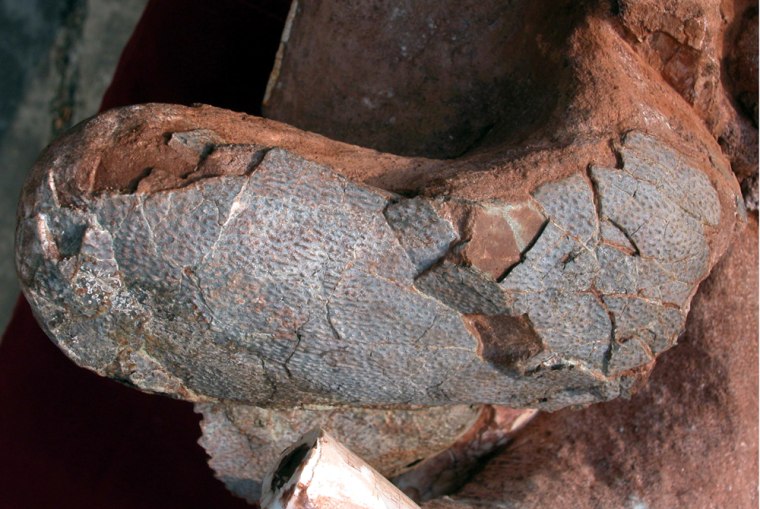The rare discovery of eggs inside a dinosaur has given scientists new clues about the reproductive biology of the creatures and more support for the theory that birds came from dinosaurs.
The pair of shelled eggs is the first of its kind found inside a dinosaur, said researchers who reported the discovery in Friday's issue of the journal Science.
Scientists found the dinosaur produced eggs in some ways like a crocodile and in other ways like a bird. Crocodiles and similar primitive reptiles have two ovaries enabling them to lay a clutch of eggs. Birds have a single ovary and can only lay one egg at a time.
The dinosaur's egg-producing capability lay somewhere in between, suggesting a link with the modern bird, researchers said. It could produce more than one egg, but only one from each ovary at a time.
The theory that birds came from dinosaurs has been supported by many researchers, said Tamaki Sato of the Canadian Museum of Nature in Ottawa. But this latest research helps advance it, she added, calling it "strong evidence."
There have been previous findings of round objects around dinosaur skeletons and scientists have suspected they might be eggs but because they did not have shells, there wasn't certainty, Sato said.
"You have egg shells with this one," she said of the specimen at the National Museum of Natural Science in Taiwan that was excavated from China. "This is the first time for sure."
The scientists studied a dinosaur from a group of dinosaurs called oviraptorosaurians. This type of dinosaur — probably 10 feet to 13 feet long — is a subgroup of the theropods, thought to have been the ancestors to modern birds.
The remains of the shelled eggs looked like pineapple-sized potatoes. The similar size of the eggs suggests the creature's two oviducts each produced a single, shelled egg at the same time, the report said.
Matt Carrano, curator of dinosaurs at the National Museum of Natural History in Washington, said the findings provide greater insights into the biology of the dinosaur and the evolution of birds.
"It's a window into a particular stage of evolution," he said. "This particular dinosaur has characteristics that are birdlike but retains reptillian-like features."
"You have oviducts but they're only doing one egg at time. Its biology is half way there between a bird and reptile."
Carrano also said it tells something about birds.
"The evolution of one egg at a time happened very early, before birds could fly, and then the evolution of only one oviduct happened later," he said.
"That might be related to the origin of flight," he said, explaining that maybe birds wanted to lighten their body and so developed one oviduct.
